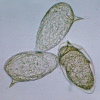Schistosomiasis-associated pulmonary hypertension
- PMID: 25610596
- PMCID: PMC4278620
- DOI: 10.1086/678507
Schistosomiasis-associated pulmonary hypertension
Abstract
Schistosomiasis, a parasite-borne disease, is highly prevalent in Africa and Asia; it is estimated that close to 20 million people worldwide have a severe form of the disease. The chronic form can affect the gastrointestinal system and lead to hepatosplenic disease, and it may cause cardiopulmonary complications, including pulmonary hypertension. The exact pathogenesis of schistosomiasis-associated pulmonary hypertension (Sch-PH) remains unclear, although several mechanisms, including parasitic arterial embolization, pulmonary arteriopathy, and portopulmonary hypertension-like pathophysiology, have been suggested. The immunopathology of the disease is also unclear, although there are similarities with the immunology of idiopathic pulmonary arterial hypertension (PAH). Finally, the treatment of Sch-PH has not been well studied. There is some evidence on treating the underlying infection, with unclear effect on Sch-PH, and advanced PAH therapies are now being suggested, but more studies are needed to confirm their efficacy.
Keywords: Sch-PH; chronic schistosomiasis; pathogenesis and treatment; pulmonary hypertension.
Figures



Similar articles
-
Schistosomiasis-associated pulmonary arterial hypertension (Sch-PAH): A comprehensive review of diagnosis and management.Respir Med. 2025 Apr-May;240:108026. doi: 10.1016/j.rmed.2025.108026. Epub 2025 Mar 7. Respir Med. 2025. PMID: 40057136 Review.
-
Immunopathological aspects of schistosomiasis-associated pulmonary arterial hypertension.J Infect. 2014 Jan;68(1):90-8. doi: 10.1016/j.jinf.2013.08.004. Epub 2013 Aug 15. J Infect. 2014. PMID: 23954614
-
Schistosomiasis-associated pulmonary arterial hypertension: a systematic review.Eur Respir Rev. 2020 Feb 5;29(155):190089. doi: 10.1183/16000617.0089-2019. Print 2020 Mar 31. Eur Respir Rev. 2020. PMID: 32024722 Free PMC article.
-
[Schistosomiasis and pulmonary hypertension].Tuberk Toraks. 2017 Sep;65(3):237-244. doi: 10.5578/tt.53798. Tuberk Toraks. 2017. PMID: 29135402 Review. Turkish.
-
Schistosomiasis associated pulmonary hypertension.Int J Clin Pract Suppl. 2010 Jan;(165):25-8. doi: 10.1111/j.1742-1241.2009.02234.x. Int J Clin Pract Suppl. 2010. PMID: 19958397
Cited by
-
Paclitaxel blocks Th2-mediated TGF-β activation in Schistosoma mansoni-induced pulmonary hypertension.Pulm Circ. 2019 Jan-Mar;9(1):2045894018820813. doi: 10.1177/2045894018820813. Epub 2018 Dec 4. Pulm Circ. 2019. PMID: 30511588 Free PMC article.
-
Praziquantel for Schistosomiasis: Single-Drug Metabolism Revisited, Mode of Action, and Resistance.Antimicrob Agents Chemother. 2017 Apr 24;61(5):e02582-16. doi: 10.1128/AAC.02582-16. Print 2017 May. Antimicrob Agents Chemother. 2017. PMID: 28264841 Free PMC article. Review.
-
Pulmonary hypertension in low- and middle-income countries with focus on sub-Saharan Africa.Cardiovasc Diagn Ther. 2020 Apr;10(2):316-324. doi: 10.21037/cdt.2019.07.06. Cardiovasc Diagn Ther. 2020. PMID: 32420114 Free PMC article. Review.
-
Pulmonary hypertension.Nat Rev Dis Primers. 2024 Jan 4;10(1):1. doi: 10.1038/s41572-023-00486-7. Nat Rev Dis Primers. 2024. PMID: 38177157 Review.
-
Rationale and design of a screening study to detect schistosomiasis-associated pulmonary hypertension in Ethiopia and Zambia.Pulm Circ. 2022 Apr 22;12(2):e12072. doi: 10.1002/pul2.12072. eCollection 2022 Apr. Pulm Circ. 2022. PMID: 35514775 Free PMC article.
References
-
- Wilson RA. The saga of schistosome migration and attrition. Parasitology 2009;136(12):1581–1592. - PubMed
-
- Ross AG, Bartley PB, Sleigh AC, Olds GR, Li Y, Williams GM, McManus DP. Schistosomiasis. N Engl J Med 2002;346(16):1212–1220. - PubMed
-
- Jauréguiberry S, Paris L, Caumes E. Acute schistosomiasis, a diagnostic and therapeutic challenge. Clin Microbiol Infect 2010;16(3):225–231. - PubMed
Publication types
LinkOut - more resources
Full Text Sources
Other Literature Sources
Miscellaneous

